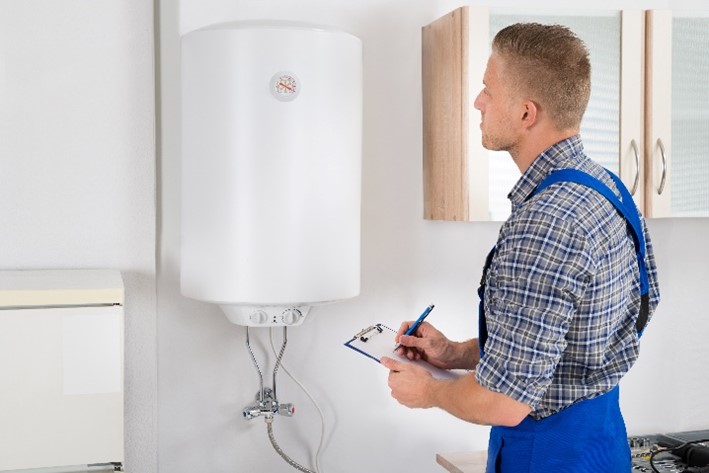Ensuring Longevity of Your Home's Hot Water System: Maintenance TipsStep-by-Step Guide to Caring for Your Home's Hot Water System
Ensuring Longevity of Your Home's Hot Water System: Maintenance TipsStep-by-Step Guide to Caring for Your Home's Hot Water System
Blog Article
The article following next in relation to How to Maintain a Hot Water Heater in a Few Simple Steps is pretty much engaging. Don't overlook it.

Hot water is crucial for day-to-day convenience, whether it's for a revitalizing shower or cleaning meals. To ensure your warm water system runs effectively and lasts much longer, routine upkeep is key. This article offers functional ideas and understandings on how to maintain your home's hot water system to prevent interruptions and expensive repair services.
Intro
Preserving your home's hot water system may seem difficult, but with a few simple actions, you can guarantee it operates smoothly for years to find. This guide covers everything from understanding your hot water system to do it yourself upkeep ideas and understanding when to employ expert assistance.
Significance of Maintaining Your Warm Water System
Routine maintenance not just expands the life expectancy of your hot water system however also ensures it runs efficiently. Neglecting upkeep can cause lowered effectiveness, higher power bills, and even premature failing of the system.
Indicators Your Warm Water System Requirements Maintenance
Recognizing when your hot water system needs attention can prevent major concerns. Keep an eye out for indicators such as irregular water temperature level, strange noises from the heater, or rusty water.
Flushing the Water Heater
Flushing your water heater gets rid of debris buildup, improving performance and lengthening its life.
Checking and Replacing Anode Rods
Anode rods avoid corrosion inside the tank. Examining and replacing them when worn out is vital.
Facility Concerns Calling For Professional Help
Instances consist of major leakages, electric problems, or if your water heater is regularly underperforming.
Routine Expert Upkeep Conveniences
Expert upkeep can consist of detailed assessments, tune-ups, and making sure compliance with security standards.
Examining and Changing Temperature Settings
Readjusting the temperature settings ensures optimal performance and safety.
DIY Tips for Maintenance
You can execute numerous upkeep jobs on your own to keep your hot water system in leading condition.
Checking for Leaks
On a regular basis check pipes and connections for leaks, as these can bring about water damages and greater expenses.
Understanding Your Hot Water System
Before diving right into upkeep jobs, it's valuable to understand the standard parts of your warm water system. Normally, this consists of the water heater itself, pipes, anode poles, and temperature level controls.
Regular Monthly Maintenance Tasks
Regular month-to-month checks can assist capture small problems before they escalate.
Examining Pressure Alleviation Valves
Examining the stress relief valve guarantees it operates properly and avoids excessive pressure buildup.
Shielding Pipelines
Insulating warm water pipes reduces warmth loss and can save energy.
When to Call an Expert
While DIY upkeep is useful, some concerns require professional competence.
Conclusion
Normal maintenance of your home's hot water system is crucial for effectiveness, long life, and expense savings. By complying with these tips and understanding when to seek specialist help, you can ensure a trusted supply of warm water without unexpected disturbances.
How to Maintain an Instant Hot Water Heater
Before tinkering with your hot water heater, make sure that it’s not powered on. You also have to turn off the main circuit breaker and shut off the main gas line to prevent accidents. Also turn off the water valves connected to your unit to prevent water from flowing into and out of the appliance. 2. When you’re done, you have to detach the purge valves’ caps. These look like the letter “T” and are situated on either side of the water valves. Doing so will release any pressure that has accumulated inside the valves while at the same time avoid hot water from shooting out and burning your skin. 3. When the purge valves’ caps are removed, you have to connect your hosing lines to the valves. Your unit should have come with three hoses but if it didn’t, you can purchase these things from any hardware or home repair shops. You can also get them from retail stores that sell water heating systems. Read the user’s manual and follow it to complete this task properly. When the hosing lines are connected, open the purge port’s valves. 4. You should never use harsh chemical cleaners or solutions when cleaning your unit. Make use of white vinegar instead. It should be undiluted and you’ll probably use about 2 gallons. 5. Now flush your water heater. This task should probably take about 40 minutes. We can’t give you specific directions for this because the procedure is carried out depending on the type, model and brand of your heater. With that being said, refer to the user’s manual. 6. When you’re done draining the unit, you have to turn off the purge port valves again. Remove the hosing lines that you earlier installed on each of the water valves. Put the valve caps (purge port) back in their respective places and be very careful so as not to damage the rubber discs that are found inside these caps. 7. Now that everything’s back in place, check your user’s manual again to find out how to reactivate your water heating system. 8. Once it is working, turn one of your hot water faucets on just to let air pass through the heater’s water supply pipes. Leave the tap on until water flows smoothly out of it. https://www.orrplumbing.com/blog/2014/september/how-to-maintain-an-instant-hot-water-heater/

I am just very taken with Tips on Maintaining a Water Heater and I am praying you enjoyed our entry. Are you aware of someone else who is excited by the niche? Please feel free to promote it. I praise you for being here. Don't forget to check our blog back soon.
Click For More Information Report this page